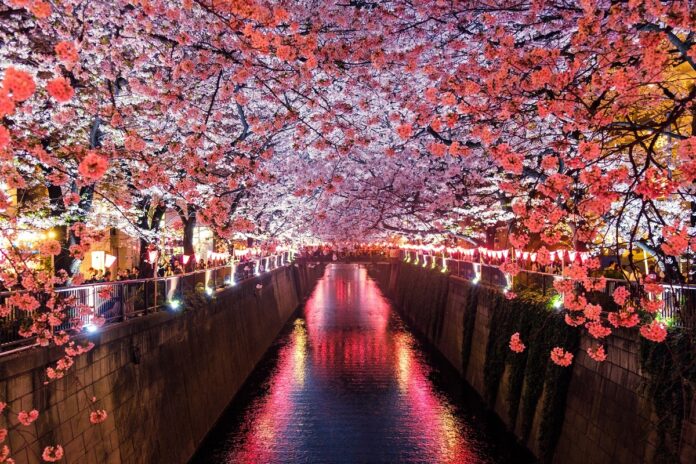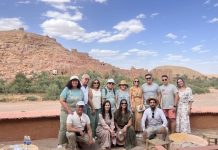There are many contrasts to be found in Japan. Its contemporary aesthetic is exemplified by the combination of rapidly evolving futuristic technology with time-honoured values and practices. As a result, the country has become one of the most visited tourist destinations in the world. It is easy to get lost in the abundance of sites on a typical tourist’s schedule so we have narrowed down a list of five attractions that are not to be missed.
Arashiyama Bamboo Grove
A visit to the Arashiyama’s bamboo grove in Kyoto is a must. The sensation of being surrounded by tall bamboo culms cannot be captured in a photograph. You’ll understand why some people claim it feels surreal once you’ve stood in the heart of the bamboo jungle. Through the trees, a solitary trail gradually ascends and you can see the magnificent entrance of the lovely Okochi-Sanso Villa at the top of the hill, which we also suggest you see.
The Capital’s Lucky Shrines
Visiting a shrine or temple on New Year’s Day is essential as part of the hatsumode ritual, which is said to bring prosperity and success in the future year. Atago Hill and Nihonbashi are just two of the numerous shrines in and around Tokyo that you might visit in the hopes that they will bring you luck.
At the temple atop Atago Hill, the fire god Homusubi-no-mikoto is worshiped. It was built in 1603 at the order of Tokugawa Ieyasu, the first shogun of Japan, to protect the imperial metropolis from natural disasters. The 86-step stone staircase that ascends from the main entrance to the parklike interior grounds is the landmark of this structure. The “stone steps to success” have a mythological origin: the third-generation Shogun Tokugawa Iemitsu ordered Magaki Heikuro, a member of the Sanuki clan, to ride his horse up the hill and show that he was the best rider in all of Japan. He accomplished this, and as a result, his name will live on in history.
In the heart of Nihonbashi’s commercial section is yet another modest shrine that has been there since the ninth century but has been relocated many times due to expansion and renovation. The Fukutoku Shrine, which is now located next to the Coredo Muromachi retail centre, is a calm oasis in the middle of the city.
Due to its status as one of the few temples in the Edo era authorized to sell lottery tickets, the location is revered as a “powerpoint” for those hoping to strike it rich. Even if you don’t play the lottery, stopping by for an omamori, a Japanese talisman of prosperity or good fortune, is a nice idea.
Bustling Mountain Villages
Shirakawa-g and Gokayama are two of Japan’s most picturesque villages because of their location among towering mountains, expansive valleys, and lush woods. They are one of the most visited places in central Honshu due to their beautiful scenery and traditional farmhouses with thatched roofs.
The villages are a delight to visit, although they can become quite busy during peak times, such as Golden Week and the cherry blossom season. This is because the beautiful, quiet, and rustic vibe is enhanced by the unique gassho-zukuri houses that appear so gorgeous surrounded by lush fields and magnificent scenery.
The Jim Homura Art Museum, local handicrafts, and the authentic ryokan inns are just a few of the highlights for tourists, who can also take in the breathtaking countryside and old farmhouses. In addition, there are beautiful hiking routes, sparkling waterfalls, and spectacular vistas to be found in the woods and mountains that surround Shirakawa-g and Gokayama.
Mount Koya
Koya-san, in the Wakayama Prefecture to the south of Osaka, is widely recognized as the spiritual epicentre of the Shingon school of Japanese Buddhism. The beautiful mountain has eight distinct summits and is home to several religious buildings, including temples, shrines, and pagodas, as well as stunning natural landscapes.
Originating in 819 CE, the initial monastery expanded to encompass more than 120 temples. Among these, the Kongobu-ji head temple stands out for its ancient rites, traditional architecture, and picturesque rock garden. In addition to Okunoin’s expansive and evocative cemetery, the beautiful pagoda at Konpon Daito is also worth a trip.
One of the best ways to fully experience the spiritual lifestyle of the mountain is to spend the night at one of the temples and hike through the forest in the area.
Takayama Town
Located on the western side of the Japanese Alps, Takayama is one of the most beautiful and underrated travel destinations in Japan. Traditional wooden buildings, brilliant shrines, well-pruned trees, and bright red bridges across the river make up the historic centre, which you are sure to enjoy exploring.
When visiting Takayama, make sure to visit during the quiet hours of the morning, to get a chance to take in the sights of the old town before the daily bustle begins. Once the townsfolk do start their daily routines, make it a point to try some of the fruit from the markets and the food from the street vendors.
Other points of interest in Takayama are the Festival Floats Exhibition Hall, where you can check out some wonderfully decorated rafts, and the Hida Folk Village, where you can see with your own eyes the traditional thatched houses which are so popular in historical movies and shows set in Japan. Finally, rent a bike through the Satoyama Experience. Getting in touch with the rhythm of Hida’s daily life is as simple as taking one of Japan’s most popular guided tours. Enjoy the seasonal rhythms of a unique way of life that has been passed down through the years as you cycle leisurely through this lovely farming village.
Final Thoughts
Whether you are visiting the bustling cities or the calm country-sides, Japan is filled with amazing sights and experiences for both tourists and locals alike. Make sure to not go only for the most well-known attractions where tourists flock by the hundreds. Try checking out the roads less travelled and towns less visited for a better understanding of this gorgeous country’s heart and soul.














